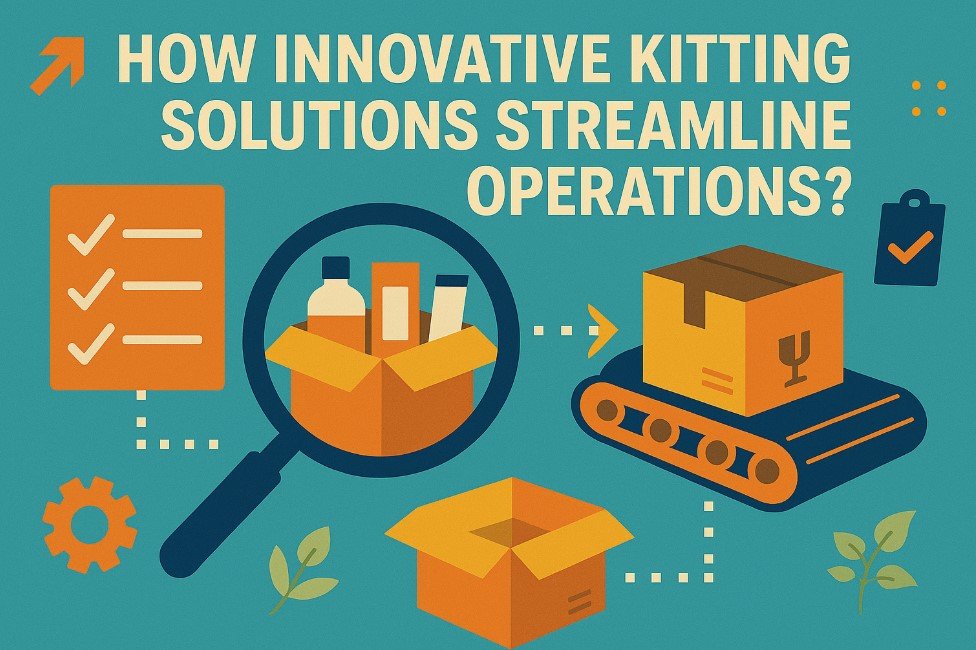Business
How Innovative Kitting Solutions Streamline Operations

Introduction to Kitting Solutions
Kitting, a streamlined approach to logistics wherein various components are assembled into a single package, is pivotal in optimizing operational processes across industries. This practice, prevalent in manufacturing, retail, and distribution sectors, ensures that all necessary parts are bundled together, thus simplifying inventory management and reducing potential errors. Businesses can significantly enhance operational efficiency by integrating Kitting and Assembly into their workflow. The ease of assembly provided by kitting leads to faster production times, decreased labor costs, and improved service delivery. As companies strive toward productivity and cost-effectiveness, kitting emerges as a strategic advantage in the logistical chain.
The Role of Kitting in Supply Chain Efficiency
In the broader supply chain framework, kitting is crucial for optimizing processes and enhancing efficiency. It minimizes lead times, which is the duration between the initiation of a process and its completion, making production cycles more predictable and manageable. This predictability allows businesses to plan better and reduce waste, optimizing resources. Kitting not only streamlines order fulfillment but also plays a hidden yet powerful role in boosting supply chain efficiency, particularly for e-commerce businesses seeking scalable solutions. Additionally, kitting supports just-in-time delivery systems by ensuring all parts are ready when needed, significantly reducing downtime and enhancing overall productivity.
How Kitting Reduces Operational Costs
Cost reduction is one of the principal benefits driving companies to adopt kitting solutions. By pre-packaging components, businesses can eliminate unnecessary warehouse storage, compress space requirements, and associated costs. This bundled approach saves money on storage and reduces the time and workforce needed for sorting and handling tasks. The kitting process boosts order accuracy and streamlines operations, making it a strategic move for cost-conscious businesses. Various industries, from electronics to automotive to consumer goods, have reaped substantial savings by incorporating kitting into their operations. The reductions in overhead allow these companies to allocate resources more effectively, investing in growth and innovation.
Technology and Kitting: A Modern Symbiosis
Integrating technology into kitting processes is revolutionizing how businesses manage their supply chains. Automation, integration software, and tracking systems drive a more efficient kitting process, reducing human errors and speeding up delivery times. Automated systems ensure that kitting operations are carried out with precision and consistency. The collaboration between kitting and technology enhances efficiency and offers valuable data for strategic planning and decision-making.
Real-Life Examples of Successful Kitting
There are numerous instances where kitting has proven to be a game-changer in various industries. For example, in the furniture industry, companies have adopted kitting to send all necessary assembly parts in one package, greatly enhancing the customer experience. This reduces the potential for lost components and ensures customers have everything they need to assemble their products upon delivery. In the tech industry, companies use kitting for IT hardware deployment, where pre-assembled kits allow for rapid installation and reduced downtime. These examples illustrate the practical benefits of kitting in simplifying operations and improving customer satisfaction.
Future Trends in Kitting Solutions
As industries keep advancing, the strategies used in kitting practices will also change. Future trends point toward a more personalized approach to kitting solutions, leveraging technologies like 3D printing and AI analytics to customize kits to specific customer needs. The advent of machine learning could further streamline the kitting process by predicting demand patterns and optimizing stock levels accordingly. With these advancements on the horizon, kitting is expected to play an even more significant role in enhancing operational agility and efficiency, ultimately leading to more dynamic and responsive supply chains.
Key Considerations for Implementing Kitting
Several critical considerations should be addressed for businesses looking to implement kitting. Understanding your operation’s requirements is vital to determining which components should be kitted together. It’s also essential to evaluate the spatial requirements and supply chain dynamics to ensure seamless integration. Overcoming inventory management and supplier coordination challenges can prove crucial to successful implementation. By addressing these considerations proactively, companies can mitigate potential obstacles and maximize the benefits of kitting solutions.
Conclusion: The Transformative Power of Kitting
Kitting represents a transformative approach to modern operations, offering substantial benefits in efficiency, cost reduction, and productivity enhancement. Its role in streamlining the supply chain and enabling more effective resource management cannot be overstated. Companies that embrace the principles of innovative kitting solutions are better positioned for success in an increasingly competitive market, ultimately achieving greater flexibility and resilience in their operations. By leveraging the benefits of kitting, businesses can ensure sustained growth and a more potent competitive edge.
-

 Social Media2 months ago
Social Media2 months agoWhat the “67” TikTok Meme Really Means
-

 Tech2 months ago
Tech2 months agoWhat To Do When Your Business Faces Network Vulnerabilities
-

 Self Improvement2 months ago
Self Improvement2 months agoUsing BCBS Rehab to Access Quality Addiction Care
-

 Games2 months ago
Games2 months agoPusoy Strategies for Play That Also Work in Pusoy Dos in English






